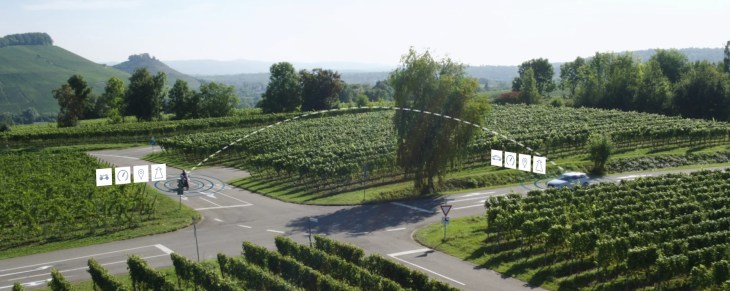Autotalks has been developing technologies that allow vehicles to talk to anything — V2X, to the nerds in the know. It’s one of the technologies that will enable fully autonomous vehicles to roam our roads. But where does that leave motorcycles, which will still have riders who rely on interactions with human drivers?
That’s where B2V, or bike to vehicle, technology comes in. Autotalks has created a B2X chipset that allows motorcycles to communicate with other vehicles and infrastructure. As of this spring, Bosch is using the company’s B2V tech in particular to study its effects on motorcycle accidents.
The B2V technology has been installed in Ducati motorcycles alongside software provided by Cohda Wireless. Bosch expects to find that creating a communications network between cars and motorcycles could “prevent nearly a third of all two-wheeler accidents with casualties in Germany,” according to a press release.
Autotalks uses dedicated short-range communications (DSRC) to send small packets of pertinent information between vehicles, no matter how many wheels they have. The information is the same as a bystander could see with their own eyes, if they could see both vehicles: location, acceleration or deceleration, direction of travel. But unlike a bystander (or a camera sensor), DSRC works even when the vehicles aren’t visible to one another.
Also, motorcycles aren’t usually equipped with telematics or modems that would allow for easy communication with other vehicles. DSRC is an inexpensive, low-power and physically very small solution for vehicles that are already stripped to their essence. DSRC is also the technology favored — so far — by the National Highway Transportation Safety Administration for V2X (or B2V, as the case may be) communications.
As anyone who’s read a bumper sticker knows, it’s tough for human drivers to see motorcycles on the road, thanks to their small size and sometimes unpredictable behavior. It’s even more difficult for the array of sensors on an autonomous vehicle to correctly identify and account for motorcycles. B2V technology could help autonomous cars see motorcycles by having the bikes send out their own information in a way the car can understand.
